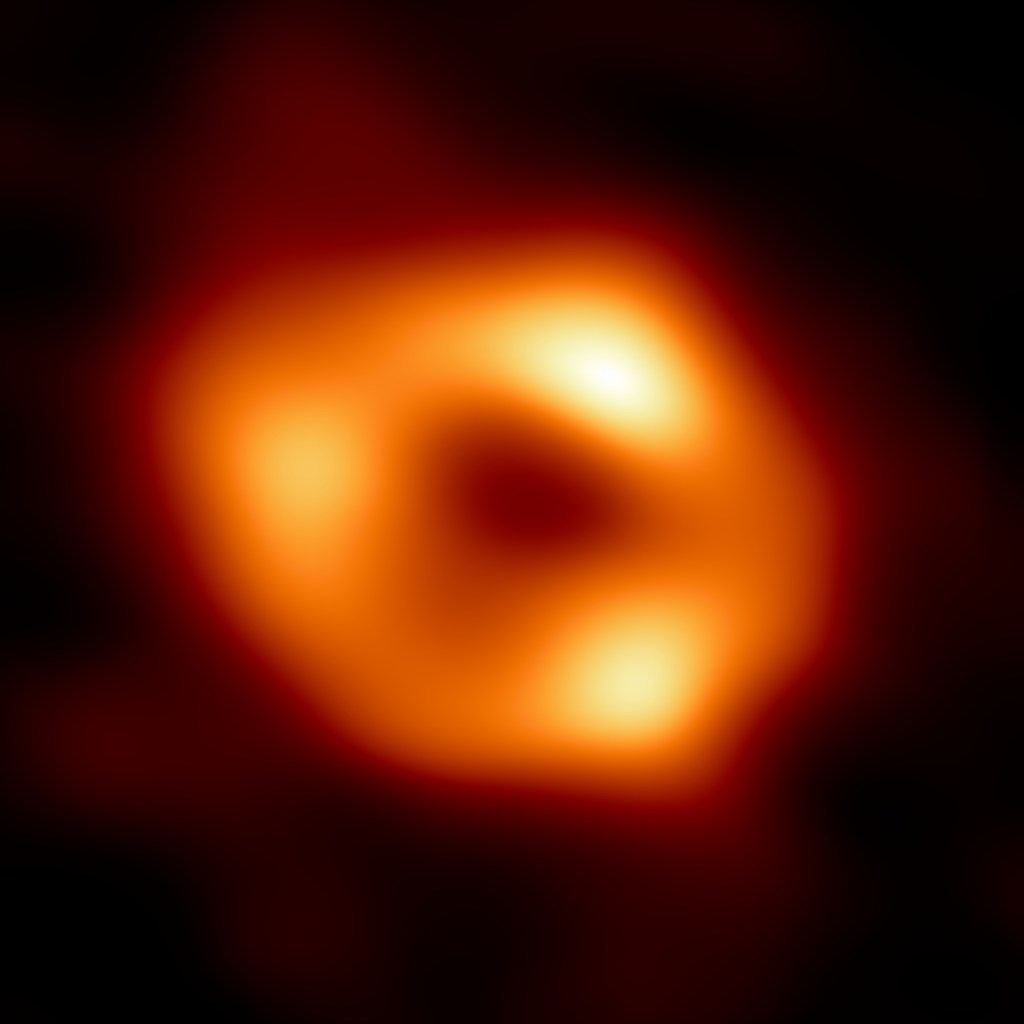Scientists have captured the first image of the black hole at the center of the Milky Way, the galaxy we live in, an achievement decades in the making that offers a never-before-seen glimpse of the closest supermassive black hole to Earth.
This enormous object, called Sagittarius A*, is four million times more massive than the Sun and is located some 27,000 light years from Earth in the dense and chaotic region at the core of our galaxy.
Videos by VICE
“This is the first image of the supermassive black hole at the heart of our Milky Way galaxy,” said Sara Issaoun, a NASA Einstein Fellow and an astrophysicist at the Harvard & Smithsonian Center for Astrophysics, at a press conference about the breakthrough on Thursday.
“For decades, we have known about a compact object at the heart of our galaxy that is four million times more massive than our Sun,” Issaoun added. “Today, right at this moment, we have direct evidence that this object is a black hole.”
The groundbreaking new image was snapped by the Event Horizon Telescope (EHT), a network of radio telescopes that spans our planet, enabling it to achieve the level of high resolution necessary for a photoshoot of a supermassive black hole.
The EHT collaboration previously snapped a mesmerizing picture of the supermassive black hole at the center of Messier 87, a giant galaxy located about 55 million light years from the Milky Way, which made history and captured the public’s imagination as the first image of a supermassive black hole ever taken, after its release in April 2019.
Because nothing escapes the boundaries of a black hole, not even light, both images only show the dark shadow at the center of their galaxies, where the black hole resides, which is circled by the bright glow of gas surrounding these enormous cosmic objects.
“Imaging this black hole would not have been possible without a big telescope of very high magnifying power, or angular resolution as we astronomers call it,” said Thomas Krichbaum, a scientist at the Max Planck Institute for Radio Astronomy, at the press conference. “To achieve this, astronomers combine radio telescopes located around the globe to create a super-telescope which has the size of the Earth.”
“With this, the EHT achieves an angular resolution which is sufficient for the imaging of such distant black holes, and also sufficient for the matter surrounding these black holes,” Krichbaum added. “To give you an idea, EHT can see three million times sharper than the human eye, so when you are sitting in a Munich beer garden for example, one could see the bubbles in the glass of beer in New York.”
The incredible image of Sagittarius A* closely resembles the EHT’s initial picture released in 2019, even though our local black hole is a thousand times smaller than the one at the center of Messier 87, known as Messier 87*. The resemblance suggests that many of the mysterious properties of supermassive black holes are similar at different scales, though differences may show up in the images of the material surrounding a black hole, which is made up of stars, gas, and dust.
But while the two supermassive black holes may look the same in these images, the new picture of Sagittarius A* was significantly more challenging to capture.
“The gas in the vicinity of the black holes moves at the same speed—nearly as fast as light—around both Sagittarius A* and Messier 87*,” said Chi-kwan (‘CK’) Chan, a scientist at Steward Observatory at the department of astronomy of the University of Arizona, in a statement.
“But where gas takes days to weeks to orbit the larger Messier 87*, in the much smaller Sagittarius A it completes an orbit in mere minutes,” Chan noted. “This means the brightness and pattern of the gas around Sagittarius A were changing rapidly as the EHT Collaboration was observing it—a bit like trying to take a clear picture of a puppy quickly chasing its tail.”
Despite these challenges, the EHT collaboration, which involves more than 300 scientists across the world, eventually captured this long-sought look at Sagittarius A during observations made in 2017. While evidence of this object’s existence has piled up for decades—and its discovery even earned the 2020 Nobel Prize for Physics—the new image makes it real, for the first time, not only to scientists, but to anyone who is awed by the mind-boggling evolution of our universe.
“This is it,” said J. Anton Zensus, director of the Max Planck Institute for Radio Astronomy, during Thursday’s press conference. “This is a big—no, it is a huge—moment for everyone in the Event Horizon Telescope collaboration. It’s the next level, and I’m proud of everyone in our entire worldwide team. They have worked so hard for this latest breakthrough.”
“You are the first to see our image of the black hole in the center of our galaxy—as close as it gets,” Zensus said. “Imagine this: We have combined the world’s greatest radio telescopes into one Earth-sized camera. To be honest, after doing this for 40 years, I’m still astonished each time we pull this off.”





